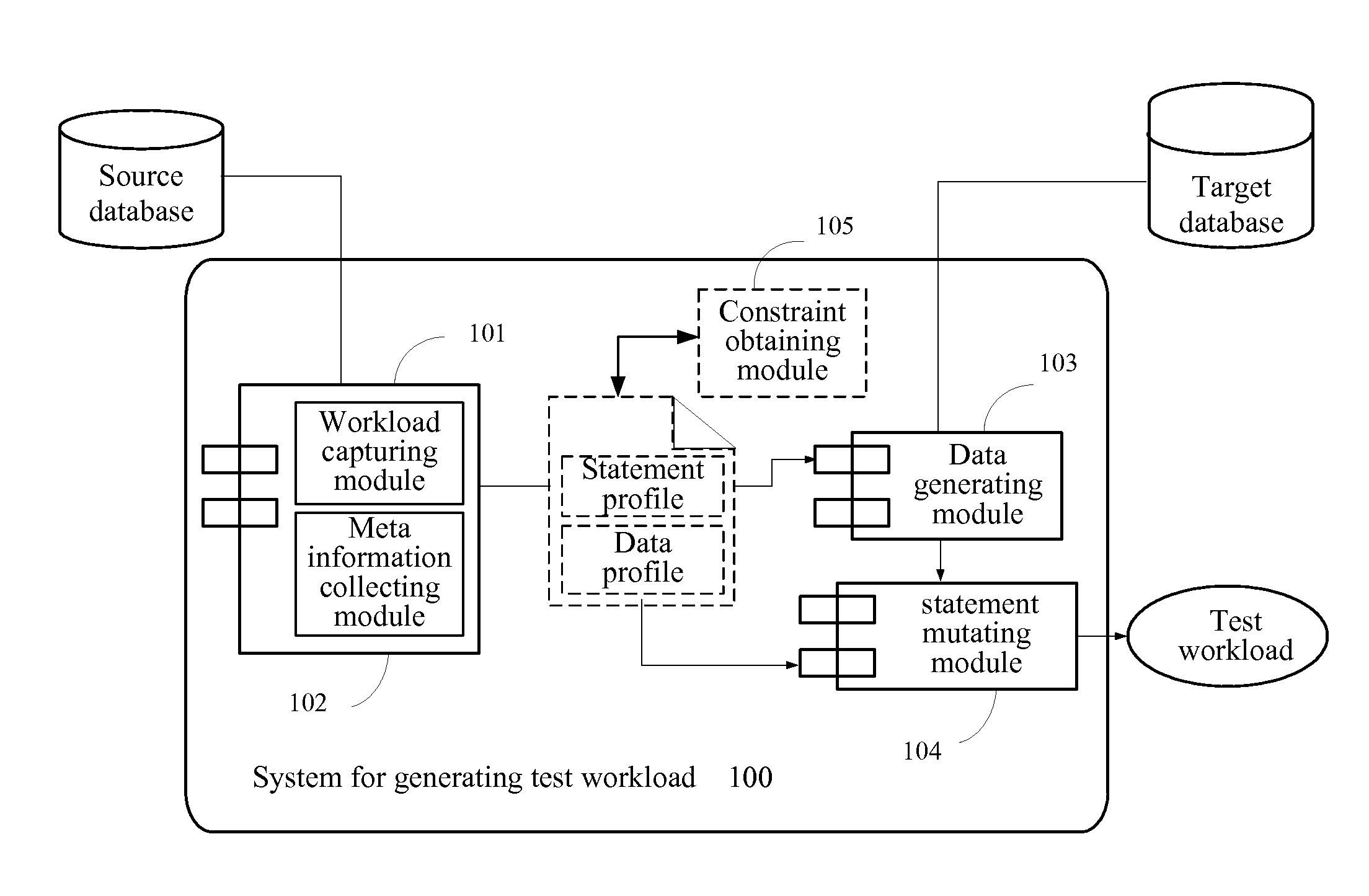Generating a test workload for a database
a database and test workload technology, applied in the field of data processing, can solve the problems of complex applications, inability to ensure high quality of these applications, and often serious consequences for the core business of database management system outag
- Summary
- Abstract
- Description
- Claims
- Application Information
AI Technical Summary
Benefits of technology
Problems solved by technology
Method used
Image
Examples
Embodiment Construction
[0024]One disadvantage of all the test data generation approaches of the prior art is that they do not take the SQL statements and application workflow into consideration which often disqualifies them from being a sufficient end-to-end solution. Thus, inventors have recognized a need for a solution which can generate easily a portable and generic end-to-end workload for database testing.
[0025]The present invention proposes a solution for generating or cloning a test workload based on completely non-confidential meta information of the data involved in a real-world application workload, wherein the workload refers to a set of database statements in the application executed upon data in a database, and the flow thereof. The generated test workload provides a portable and accessible end-to-end solution, which has no issue of data confidentiality, but retains the characteristics in the source environment necessary for functional and performance testing.
[0026]Due to extensive analysis an...
PUM
 Login to View More
Login to View More Abstract
Description
Claims
Application Information
 Login to View More
Login to View More - R&D
- Intellectual Property
- Life Sciences
- Materials
- Tech Scout
- Unparalleled Data Quality
- Higher Quality Content
- 60% Fewer Hallucinations
Browse by: Latest US Patents, China's latest patents, Technical Efficacy Thesaurus, Application Domain, Technology Topic, Popular Technical Reports.
© 2025 PatSnap. All rights reserved.Legal|Privacy policy|Modern Slavery Act Transparency Statement|Sitemap|About US| Contact US: help@patsnap.com



